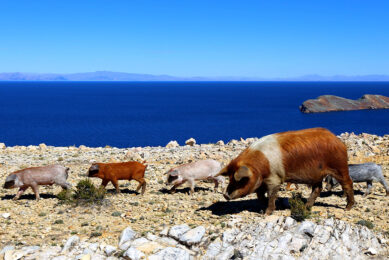Comparing antibiotic resistance in pigs

Great strides are being made in the EU to reduce antibiotic use in pigs. Health expert David Burch thought it would be helpful to see if any progress is being made to reduce antibiotic resistance yet.
I thought I would compare data from reports by the European Food Safety Authority (EFSA) and European Centre for Disease Prevention and Control (ECDC). They report on resistance using Escherichia coli isolated from pigs, as the primary surveillance organism.
The EFSA/ECDC report dated 2012 gave 2010 data and the 2017 report gave information on isolates from 2015. The latest report in 2018 dealt with poultry isolates only, unfortunately, but 2019’s should be on pigs again.
The comparison shows how far the EU has moved forward on monitoring antibiotic resistance over recent years (see Table 1).
Firstly, the number of member states reporting has increased from only 6 to 27 and the number of isolates has increased 4-fold. This shows that the EU is really addressing the problem of antibiotic resistance and in the future will be able to use surveillance to monitor what is going on and the progress that they are making.
Antibiotic resistance figures have not changed
The resistance figures themselves have not changed hugely during this time. The penicillins, ampicillin/amoxicillin, are the most widely used antibiotics in man, so are of great importance.

Read more about pig health in our Pig Progress Health Tool
The 3rd generation cephalosporin, cefotaxime, where much of the initial concern over their use in pigs, shows that resistance has not widely developed. The fluoroquinolone, ciprofloxacin, appears to have increased in resistance but this may be due to some of the new countries that have been included in the later data with very high resistance levels, such as Spain (49.4%).
Colistin and tigecycline
Of interest, the newly introduced antibiotics for monitoring, colistin and tigecycline, which have become antibiotics of last resort in man, show very low levels of resistance in pigs. Tetracycline, the most commonly used antibiotic in pigs, has a comparatively high level of resistance recorded.
If we look closer at the major pig-producing countries that have reported in both sets of data we can better evaluate any changes (see Table 2).
Denmark: increase, France and Netherlands: decrease
Overall, Denmark, which is considered a low user of antibiotics in pigs, has seen resistance increase slightly (12.7%), although it has still the lowest total resistance score.
France and the Netherlands have seen falls in the levels of resistance, overall, during the 5-year period, 23.6% and 22.6% respectively, which is encouraging. There was very little resistance to colistin or gentamicin and none reported for tigecycline, which is also very positive, as they are considered critically important antibiotics.
Brexit
Brexit is also moving forward, with one year to go before the UK officially leaves. Delicate negotiations are ongoing but it would be nice to think we can carry on contributing to this surveillance data in the future, like Norway and Switzerland.
It is hoped that the UK carries on with this useful work, especially as targets for reduction of antibiotic use in pigs have been defined.
Retirement
On a lighter note, I am also moving forward into retirement. I have recently been able to travel to New Zealand and was introduced to the Kunekune pig by a kind and very knowledgeable colleague, who is the chief vet at Auckland Zoo, James Chatterton, about to give them a vaccination shot, while being distracted with treats by his 2 caring assistants.

The Kunekune was thought to be introduced into New Zealand from Asia, based on genetic tracing, and was developed by the Maoris and early settlers to provide pork. They are smaller than our current commercial breeds and are extremely friendly and have become popular pets in many countries including the UK and USA.
The zoo is extremely involved with conservation of their native species, like the Kiwi and KaKapo parrot and they have been very successful in re-populating areas and islands after controlling predators that were introduced by European settlers.











